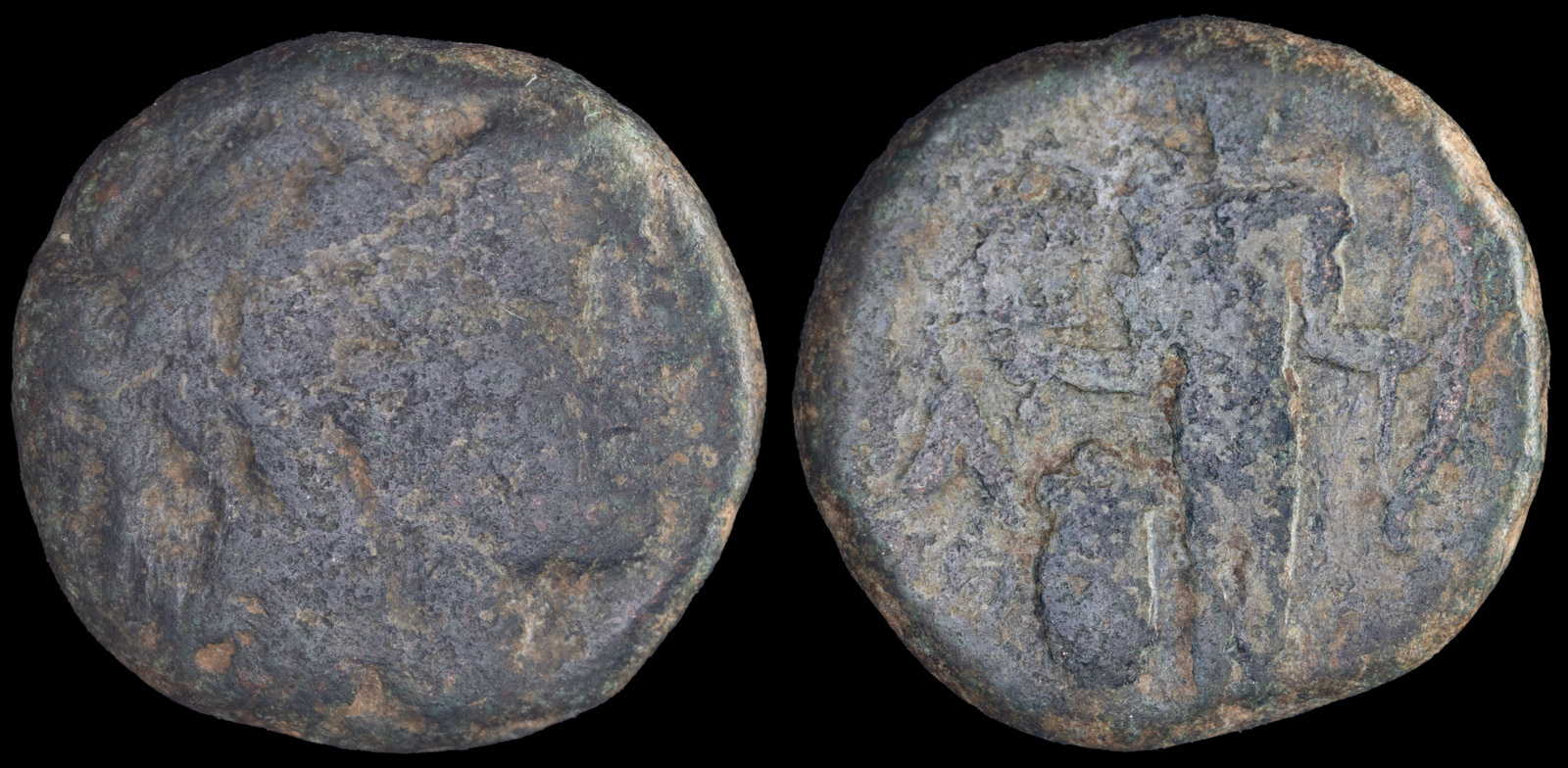The Three Graces
View All Tags
In Greek art and sculpture, the Three Graces were frequently shown dancing in a circle or standing close together, sometimes with their arms entwined. Their presence conveyed ideals of refinement and cultural elegance, appearing in temples, on pottery, and later in Renaissance and neoclassical artworks. Their influence extended beyond mythology into daily life, where they represented the graceful interaction of generosity, beauty, and kindness—values cherished in both personal relationships and civic life.
While their parentage varies in different sources—sometimes said to be the daughters of Zeus and Eurynome or of Dionysus and Aphrodite—their symbolic role remained consistent across time. They were often invoked in poetry and hymns as sources of inspiration and delight.

Attica, Athens
ca 36-33 BCE
16mm, 5.65g
Athena right/archaic cult statue of Apollo Delios, holding bow and image of the Three Graces.
Kroll 143